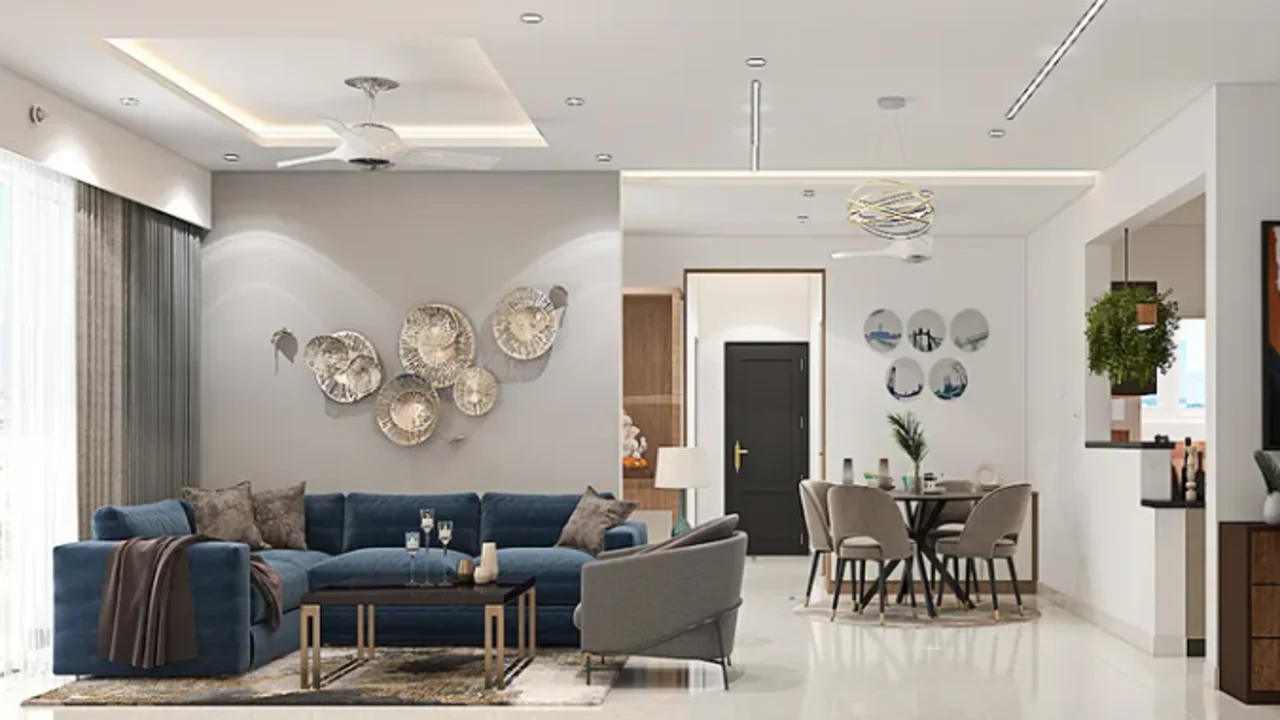Minimalist interior design is more than just a trend. It’s a lifestyle choice that emphasizes simplicity, functionality, and beauty in its most basic forms. Minimalist design creates spaces that are calm, open, and uncluttered. This approach resonates with those who seek a refuge from the chaos of modern life.
The Concept Of Minimalist Interior Design
Minimalist interior design involves using the fewest possible elements to create a clean and functional space. This design style avoids clutter and relies on a neutral color palette, simple forms, and open spaces to create a peaceful environment. Minimalism in interior design is about creating harmony and balance. The goal is to achieve a sense of tranquility by eliminating distractions and focusing on the essentials. The style prioritizes light, space, and the interplay of materials to create rooms that feel both welcoming and spacious.
The Origins Of Minimalist Interior Design
Minimalism as an artistic movement emerged in the mid-20th century, influenced by the simplicity found in traditional Japanese design and the modernist movement in Western art and architecture. In the 1960s and 1970s, minimalist design began to gain popularity as a reaction against the excesses of earlier decorative styles. It became associated with a modern, forward-thinking lifestyle that valued clarity, order, and functional beauty.
Minimalism was a kind of response and protest to the pretentiousness and pomposity of romanticism. Designers wanted to show something new. They created non-standard, home rooms that would not fit into the standard concepts of the word. It is today we look at the brevity of minimalism simpler, and just some 20 years ago – it was a real explosion in the world of interior design.
Key Features Of Minimalist Interior Design
Several key features define minimalist interior design:
- Open Spaces
Minimalist design values open, airy spaces. Furniture arrangements are carefully considered to avoid overcrowding. Large windows and light, airy spaces are hallmarks of minimalism. The goal is to make the most of the available daylight, creating a bright and inviting environment.
All rooms should be spacious, with a lot of free space and space, a minimum of furniture is observed. There should be nothing superfluous, just the opposite, on the contrary, in minimalism it seems that the whole interior consists of large furniture silhouettes and light walls. Another feature of this style is a minimum of partitions, walls, as a rule, as much as possible remove. Visual boundaries between rooms can be made with the help of other techniques.
- Lack Of Clutter
One of the most important aspects of minimalist design is the absence of clutter. Everything in the room has a place, and surfaces are kept clean and clear. In minimalism, decor is kept to a minimum. A single piece of art or a simple arrangement of flowers might be the only decoration in a room.
- Simplicity
Minimalist spaces avoid unnecessary details. Furniture and decor are stripped down to their basic forms, and every item serves a clear purpose. Whether it is a kitchen or a gaming room where you play at avalon78.com/en-CA on your laptop, any room can be designed in minimalist interior style due to its simplicity.
- Functional Furniture
In minimalist interiors, furniture pieces are often multifunctional. A sofa might have hidden storage, or a dining table might double as a workspace. Furniture is often sleek and modern, with clean lines and a focus on comfort.
- Natural Materials
Wood, wool, and leather are commonly used in minimalist interiors. These materials add warmth and texture to otherwise simple spaces.
Scandinavian & Japanese Minimalist Interior Styles
Two popular interpretations of minimalist interior design are the Scandinavian and the Japanese ones. Also known as Scandi style, the Scandinavian style originated in the Nordic countries. Long, dark Scandinavian winters inspired designers to create Scandi style. It is a design approach that prioritizes light and warmth. A key concept in Scandinavian design is “hygge”. The concept of hygge refers to a cozy and comfortable atmosphere.
Japanese minimalism, or Zen minimalism, is deeply rooted in the principles of Zen Buddhism. It emphasizes simplicity, harmony, and balance. Like Scandinavian minimalism, Japanese design uses natural materials. Wood, bamboo, and paper are often used to create a connection with nature. This interior often incorporates traditional Japanese elements, like tatami mats and shoji screens. These elements contribute to the room’s simplicity and connection to nature.
Conclusion
Minimalist interior design offers a way to create spaces that are not only beautiful but also functional and serene. By focusing on simplicity, minimalist interiors provide a sense of peace and order in an otherwise chaotic world. Designing your home with minimalism in mind allows you to create a space that reflects clarity and mindfulness.

Ruby Stauffer is a prominent technology blogger known for her insightful analysis and in-depth reviews of the latest tech trends and gadgets. Her blog has become a go-to resource for tech enthusiasts seeking reliable information and expert opinions on the ever-evolving world of technology.

